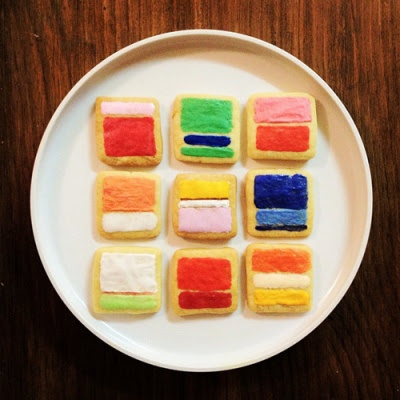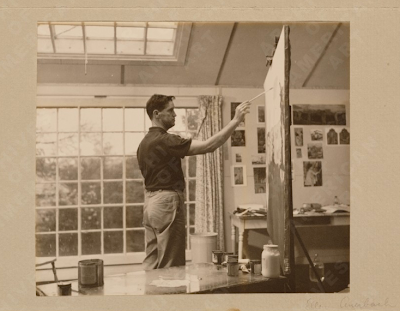Mark Rothko
b. 1903, Dvinsk, Russia; d. 1970, New York
part 1.
Mark Rothko was born Marcus Rothkowitz on September 25, 1903, in Dvinsk, Russia. In 1913 his family left Russia and settled in Portland, Oregon. Rothko attended Yale University, New Haven, on a scholarship from 1921 to 1923. He left Yale prematurely and moved to New York. In 1925 he studied under Max Weber at the Art Students League. He participated in his first group exhibition at the Opportunity Galleries, New York, in 1928. During the early 1930s Rothko became a close friend of Milton Avery and Adolph Gottlieb. His first solo show took place at the Portland Art Museum, Oregon, in 1933.
Rothko’s first solo exhibition in New York was held at the Contemporary Arts Gallery in 1933. In 1935, together with William Baziotes, Gottlieb, and others, Rothko founded the Ten, a group of artists sympathetic to abstraction and expressionism that exhibited until 1940. He executed easel paintings for the Works Progress Administration Federal Art Project from 1936 to 1937. By 1936 Rothko knew Barnett Newman. In the early 1940s he worked closely with Gottlieb, developing a painting style with mythological content, simple flat shapes, and imagery inspired by so-called primitive art. By mid-decade his work incorporated Surrealist techniques and images. Peggy Guggenheim gave Rothko a solo show at Art of This Century, New York, in 1945.
In 1947 and 1949 Rothko taught at the California School of Fine Arts, San Francisco, where Clyfford Still was a fellow instructor. With Baziotes, David Hare, and Robert Motherwell, Rothko founded the short-lived school Subjects of the Artist, New York, in 1948. The late 1940s and early 1950s saw the emergence of Rothko’s mature style, in which frontal, luminous rectangles seem to hover on the canvas surface. In 1958 the artist began his first commission, monumental paintings for the Four Seasons Restaurant, New York. The Museum of Modern Art, New York, gave Rothko an important solo exhibition in 1961. He completed murals for Harvard University, Cambridge, Massachusetts, in 1962 and in 1964 accepted a mural commission for an interdenominational chapel in Houston. Rothko committed suicide on February 25, 1970, in his New York studio. A year later the Rothko Chapel in Houston was dedicated, and in 1978, the Guggenheim Museum organized a major retrospective.
ROTHKO'S STUDIO SET DESIGN FROM THE PLAY "RED"
The Seagram Murals.
In the late 1950s, Rothko was commissioned to create a series of paintings for the new Four Seasons restaurant in New York. These paintings were to become the aforementioned Seagram Murals. While on trip to Florence he gained inspiration for the series from the San Lorenzo library’s Michelangelo Room, and said that the “room had exactly the feeling that I wanted [...] it gives the visitor the feeling of being caught in a room with the doors and windows walled-in shut.” Again, it was clear that he intended his paintings to have a very physical effect on viewers, and also it was clear that he wasn’t really keen on making “nice” paintings as part of a restaurant backdrop. Indeed, in the end Rothko pronounced the Four Seasons to be pretentions and inappropriate to display his work, and as such he never completed the project. The paintings he’d created towards it were never hung in the restaurant.
ps. SEE THIS DOCUMENTARY. It's EYE-LIKEY RECOMMENDED.
LOVED IT.

Rothko in his studio, East Hampton, NY 1964
Part 2. coming soon
Have a cookie.









































































